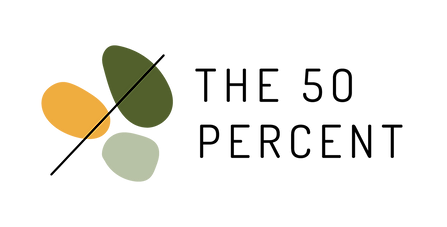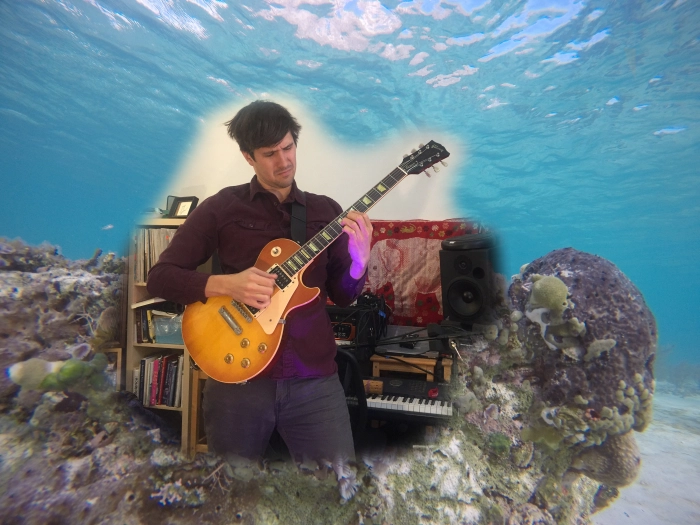Author’s note: The interview has been condensed to fit.
I was once a student on a college campus, and I’ve been around people like Perry Dripps, the Sustainability Engagement Program Coordinator at the Penn State Sustainability Institute that worked to empower students on campus to advocate for the change they wanted to see. As I was looking into the work, I came across Perry’s job description and because of my interest in youth empowerment, I wanted to hear about the work occurring on the ground regarding youth engagement and sustainability efforts. I sat down with Perry Dripps, and we spoke about his work, student engagement and empowerment and campus sustainability efforts.
Hasheemah Afaneh: Tell us about yourself.
Perry Dripps: My background in education, and I have a counseling degree. In a previous life, I was a middle school science teacher. I’ve also worked a variety of different roles – healthcare, for example. I’m very passionate about healthy development throughout the lifespan, our own health and the health of our planet. I started as [program coordinator] in the summer of 2019. I was so excited to bring together these two passions: mentoring and working with students and the ability to focus on the three main aspects of sustainability, not just the environmental but also the social and economic aspects.
HA: Talk to us a little more about your role at Penn State Sustainability Institute. What have you all been up to?
PD: I actually have a dual role with the Sustainability Institute and the Office of Student Activities. The latter focuses on this co-curricular development, so out of the classroom experiences. My role is to work closely with the student organizations on campus to expose them to sustainability, providing them with hands-on experiences to lead them to reflect on their understanding of sustainability and actions they can take. I do this primarily through education. There’s a thousand student organizations on campus, which I don’t work with all at the same time, but I do create a lot of programs to increase their literacy and understanding primarily using the U.N. Sustainable Development Goals. I work with student organization leaders to think about their missions and create events on how to unify and amplify the student voice. I also work with Student Government, who work on behalf of all the student body. I also serve on the Student Sustainability Advisory Council, where students have the opportunity to have a direct connection to university administrators to advocate and make recommendations [regarding sustainability].
HA: You have the Student Government who face the Administration with their recommendations around sustainability. Has there been a time where the Administration was approached and the students saw the change they recommended or advocated for?
PD: A lot of the changes at a large university take time, especially in light of many challenges. Between the pandemic, systemic racism and other challenges in higher education, students, I think, sometimes feel frustrated not being able to see what they wanted come into fruition. What I always say, even if you aren’t seeing it today, you are making a difference. It might happen after you graduate, but advocating does make a big difference. There have been exciting developments and changes. We have a number of mechanisms to embed sustainability in what the university is doing. For example, we have Business and Finance being interested [in this work]. There’s a huge interest in renewable energy. In terms of the environmental justice piece, there’s been a strong response of ‘how are we supporting disenfranchised populations? What initiatives are we using?’ There’s been some exciting developments there. We have a Housing and Food Security Task Force that involves a number of students from different groups on campus. There have been a lot of departments listening to what students are needing. The challenges of the pandemic, also, are massive, but we had a student emergency fund created. Counseling and psychological services also stepped up, and people ask, ‘well, how is this related to sustainability?’ They’re all pertaining to the health and wellbeing of students and the ability and capacity to adapt as a university [to challenges]. In terms of major breakthroughs, we had a power purchase agreement relatively recently for renewable light source and that provides 25% of the purchase electricity across the state campus. This is a huge step in the right direction. I think private-public partnerships like this have a lot of potential. Students would like to see all of this quicker, but I do think they see progress happening.
HA: One of the things you talked about earlier was around co-curricular programs and activities. What do those efforts look like?
PD: This past year, I created an environmental justice student group. We started with around 25 students who were passionate about environmental justice issues. This is looking at the benefits and burdens [of sustainability efforts]. Unfortunately, Black, brown, and indigenous populations disproportionately suffer from those burdens. Meeting with this group of students is with the goal of talking about these different issues, so education. Before that, we do identity work to help break down barriers, assumptions and biases within the group, and encourage more conversation with people coming from different backgrounds. I find this opens up dialogue. It allows us to hold ourselves accountable. Also, exposing students to different thought leaders and the skills people possess [is part of this work]. We also look at how to elevate the voices and needs of disenfranchised people. We also look at policy across all levels that we can work to advocate for. We [also] look at the knowledge that diverse groups bring to sustainability. What was really exciting during the pandemic was seeing the many events around social justice topics.
HA: What have these collaborations between the groups looked like over the year and a half of the pandemic?
PD: When the pandemic was coming into play in March, all of a sudden everyone’s lives changed. That was a really challenging time. I do think the one opportunity that came up was the ability to connect online. I think everyone felt this isolation and looked for social connection. I think especially early on, there was a lot of great activity around providing space and connecting students through virtual events. I was really impressed. For example, the Environmental Justice group, we’d meet every other week wanting to connect and talk about different issues. I thought that was an important way to keep community. One other interesting thing is it was a neat opportunity to be talking to students from different countries. That was an eye-opening and informative time. We’re all connected to this broader, global community. Sometimes, that’s hard to see when all the students are on central campus and going about their day. In terms of collaboration, we had to really get creative [because] there’s the fatigue everyone was feeling. Getting connected to something larger than yourself and developing skills encouraged students to engage. I also think students are interested in interdisciplinary work and projects, and with collaboration, it’s important for students who are in different fields to come together and work on different issues. I tried to focus on those during the pandemic. I think what is often missing is and what I advocate for is that it’s okay to pause for a moment and check-in.
HA: Moving beyond their time on a college campus, how do educators, staff, and others encourage this momentum towards sustainability to go beyond these four years of their lives?
PD: That’s a very hard question to answer, but I think there’s many strategies that we can all use. I think storytelling and communication is very important. If people have a personal context as it relates to climate change and sustainability, it’s a powerful tool to keep students engaged and understand how it connects to them. One of the things I am focused on in the co-curricular space is the key literacies we want students to walk away with and being sustainability literate, considering the social and economic aspects of sustainability. I think that’s something that gets overlooked, but [the social and economic challenges] are important to understand. Leadership skills and competencies are another area. I am a big advocate for self-care. This is not easy work; it can be challenging and frustrating so, community and sense of belonging can be a very powerful way to have students continue in this line of work, as opposed to feeling isolated or unheard. I think there’s going to be a lot more jobs in this area and a focus on equity, and if students feel that they are able to champion sustainability in whatever they choose to do or focus on. You can bring [sustainability] to whatever you go into. Staying curious and questioning the status quo will want students to want to stay involved in the work.

